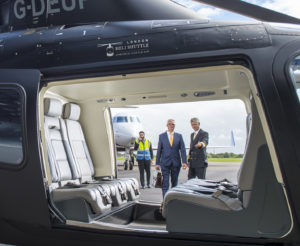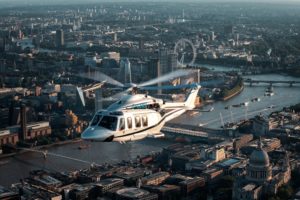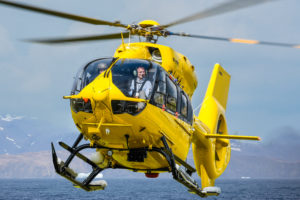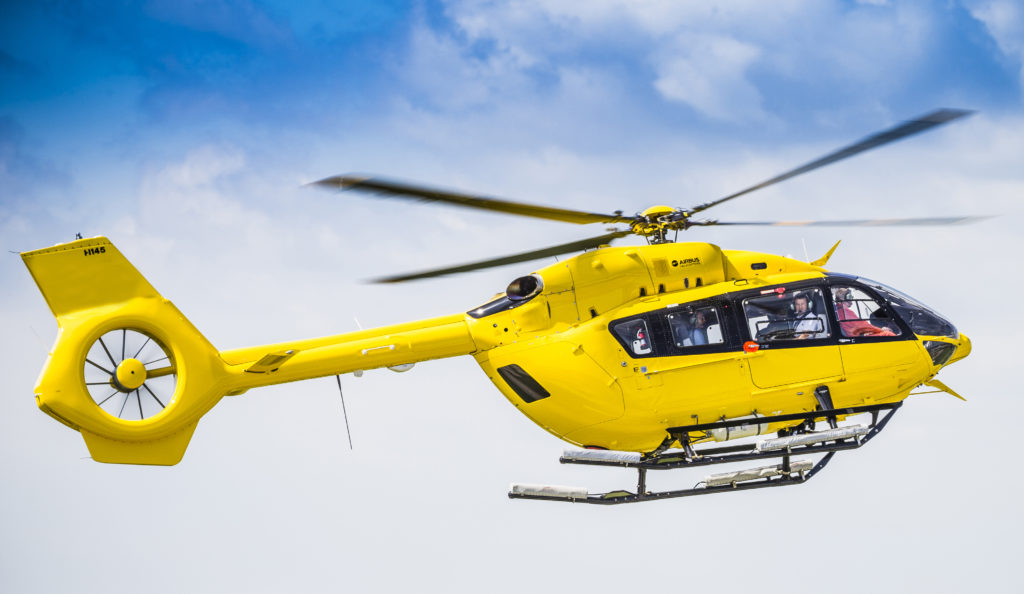Words by Kirstie Pickering
Helicopters provide a safe, fast way to avoid time-consuming travel between destinations. Like every part of the aviation industry, helicopter operations were severely impacted by the pandemic, but business is back on the rise.
Global aircraft operator Air Charter Service experienced an over 150% increase in helicopter flights during summer 2021 compared with the same period last year, emphasizing how better times are ahead.
“Like fixed wing aircraft, there was limited activity through the major lockdowns but, as regions open up, the ability to charter helicopters has returned,” says Andy Christie, group private jets director at Air Charter Service.
“With limited capacity for commercial flights and the ability to avoid busier airports, helicopters are a good option for flying to and from private residences. Quiet helipads also mean limited human contact. Due to the small cabin size, it is like traveling by car, with all crew and passengers wearing masks and regular cleaning pre and post flight.
“The increase we’ve experienced this summer is due to people having travelled less in the prior year and potentially having more disposable income, allowing the option of adding a helicopter charter or transfer to their plans. This is in line with the increase we have seen in the fixed wing market over this summer throughout both the US and Europe.”
Castle Air, a helicopter charter business based at London Biggin Hill Airport has experienced a similar uptick in demand, with this summer marking its busiest since the company launched.
“Everyone has been locked up for so long, people have got an extra bit of cash and they think, why not take a helicopter to the F1 race at Silverstone this year rather than drive there?” says Joe Finn, head of marketing at Castle Air.
“We’ve been doing Silverstone for around 15 years and this year was our busiest on record. Silverstone is the busiest event in Europe for helicopter movement, and Castle Air had its own private terminal there for the week.”
Keeping custom

Helicopter travel appeals to different markets – many people use it for business, travelling from the airport to a meeting, while others use it for leisure, such as journeying to holiday homes. What is consistent between the two approaches is the need for a seamless, reliable service every time.
“Flexibility is key because people’s desired travel times change a lot,” says Finn. “There’s a lot of operators that aren’t flexible and shot themselves in the foot during the pandemic by charging massive cancellation fees, something we paused.
“We are rare in that we employ a lot of our pilots. Customers get to know them, which is a huge part of our business offering.
“Selecting the right pilot is a big deal because they are the ones who are client-facing every day. They need to have significant customer experience, as they are the ones who bring customers back to us time and time again.
“Most of our new business comes from word of mouth. We’ve been working on partnerships recently with brands like Purdey and Bentley – companies that have a similar client base to us – and we often host events together. A lot of our clients are hedge fund managers and within the industry they all know each other and socialize together, which leads to more business for us.”
For Air Charter Service communication is the key to creating a strong relationship with its customer base.
“There are a number of variables that affect helicopters more than fixed wing aircraft, such as weather, with low cloud, high winds and time of day playing a part,” says Christie. “We work on providing updates to our customers with as much lead time as possible. We also ensure that all helicopters we offer for charter are properly licensed and certified so that they are compliant with the local country’s requirements.
“It is important to have multiple machines available to cover demand. Additionally, fixed pricing for specific popular routes – such as to local helipads, other airports and specific events such as to the Royal Ascot or Grand Prix – need to be provided to attract new customers.”
Despite its convenience, helicopter use isn’t without its challenges. Noise pollution is an issue that continues to arise in high traffic areas.
“Noise pollution, specifically during peak season like summer in the Hamptons is a major issue” says Christie. “Offering customers the ability to beat the heavy traffic is great but it can be at the expense of local residents, which causes tension between operators, regulators and residents in the flight path.
“Weather is another major limiting factor. Having to sit out a large storm or delays because of fog can ruin a day trip, but this caution has to be at the forefront of any potential trip.”
Heading offshore
 Using helicopters in a marine environment presents more challenges. Shipboard heliports involve operating in confined areas where the vessel may or may not be stationary in the water. A heliports’ deck could be unstable due to the motion of the sea, or the vessel may be operating in remote areas where there is little or no external support and where the helicopters are operating without suitable land diversions.
Using helicopters in a marine environment presents more challenges. Shipboard heliports involve operating in confined areas where the vessel may or may not be stationary in the water. A heliports’ deck could be unstable due to the motion of the sea, or the vessel may be operating in remote areas where there is little or no external support and where the helicopters are operating without suitable land diversions.
“Whilst there are ways the helicopter crew can work with the vessel to minimize the effects of challenges, depending on the geographical location and environmental conditions on the day, aspects such as wind speed and direction and deck motion are always a key consideration,” says Jonathan Turner, managing director at Maritime Aviation.
“Further to these considerations there are usually many hazards around an aviation-capable vessel that could affect the safe operation of helicopters, such as the ship’s superstructure, which may impact the wind flow over the heliport and may constitute a collision hazard; gunwales and raised kerbing around the heliport could cause dynamic rollover hazard, and loose items around the upper deck – like cushions and covers – which can cause a Foreign Object Debris [FOD] hazard.”
Whilst there are no specific qualifications required for pilots to land on shipboard heliports, it is strongly recommended that pilots operating to and from aviation-capable vessels are aware of all the additional considerations and specific hazards associated with flying to vessels and the techniques needed to mitigate their potential impact on safe and efficient helicopter operations.
Operating in the Antarctic

This year, Arctic and Antarctic cruise company Quark Expeditions partnered with helicopter operators Luxaviation and Starspeed, in addition to Maritime Aviation to launch its new polar vessel, Ultramarine. Maritime Aviation has acted as the ship and aircraft integration specialist, bringing together the vessel owner and helicopter operator in what is a highly specialised and vital role.
“If the owner of a commercial vessel – such as a cruise ship – wishes to transfer its fee-paying passengers to or from the vessel via helicopter, the helicopter operations will be Commercial Air Transport operations,” says Turner. “In such circumstances, it is incumbent upon the vessel owner to provide safe shipboard heliports that are certified for commercial operations.
“Likewise, the helicopter operator will need to operate under an Air Operator Certificate, which will inevitably require the shipboard heliports on the vessel to be certified for commercial operations. Both aspects will require appropriate civil aviation and maritime inspectorate agencies to inspect and certify the operations for commercial use.
“Maritime Aviation facilitates this by working between the relevant agencies to ensure compliance with all requirements to enable the necessary certification is achieved and, over the longer term, maintained.”
This level of commercial certification requires several key areas to be addressed. Whilst the vessel operator will be experienced in running guest itineraries and the helicopter operator will be accustomed to operating helicopters, there are times where these two areas need to be brought together to enable safe and efficient helicopter operations.
Examples of this include the development of the technical requirements of the shipboard heliports to specified industry standards; the management of safety, including Aviation Safety Audits and production of a bespoke Shipboard Heliport Operations Manual for the vessel, and the provision of specialist equipment for the safe operation of helicopters onboard.
“Most of the technical elements are consulted on during the design and build phase of a project and involve working with internal and external agencies to ensure that the heliports will meet the requirements when they are built,” says Turner. “The other areas come towards the end of the build when the vessel is approaching operational status. This is the time when the facilities have been built, the equipment is delivered and the vessel is fully crewed.”
Helicopters offer an effective way to travel to difficult to reach places quickly. There are many considerations necessary to ensure the highest level of safety and service for customers, creating an ongoing challenge for operators to consistently be at the top of their game. But, meeting this challenge maximizes the potential for repeat business in a sector re-emerging from the struggles of the pandemic.





